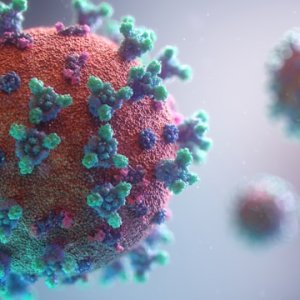
Skincare, E-Commerce: Beauty Industry Lifelines
 By Andrea Villar | Editorial Manager -
Mon, 08/10/2020 - 14:44
By Andrea Villar | Editorial Manager -
Mon, 08/10/2020 - 14:44
COVID-19 has wreaked havoc across all industries. Some saw its effects in the first months and even weeks of the crisis. In other cases, the effects are just beginning to show. A latter example is the beauty industry, which has noticed that the use of masks is not encouraging the purchase of makeup.
The National Chamber of the Cosmetic Products Industry (CANIPEC) estimates a 2.4 percent drop in the beauty market by the end of the year. However, the percentage does not worry industry experts because, along with the decline in products such as lipsticks, is the growing demand for skincare items. “During quarantine, wet wipes registered growth in sales of 11.7 percent. Shampoo sales have grown 4.3 percent and by the end of the year, we forecast an increase of 5.9 percent and 4.6 percent, respectively. Bath and shower products also saw growth of 1.5 percent”, said César Mendoza, market and trends analyst during an interview with Expansión.
But not everyone is so optimistic. A survey conducted by McKinsey & Company revealed that in case of a second wave of contagion, the beauty industry’s revenue could fall by as much as 35 percent.
E-Commerce: Beauty Industry’s Savior
With lockdowns still in place, e-commerce has seen an unprecedented increase. In June, interest in buying beauty products through online channels grew 22 percent. Twenty percent of Mexicans declared they would continue buying this way, according to the Mexican Association of Online Sales (AMVO).
“The beauty industry is not only about the use of cosmetics. It covers a range of products that correspond to care and hygiene. In these months, we have seen that the interest of buying online increased. We hope that e-commerce sales will take off in the remainder of 2020,” explained Expansión Rosa María Sánchez, director and spokesperson of the CANIPEC Beauty and Well-Being program. Traditionally, 73 percent of sales in this sector are through retail and 25 percent through direct sales, since the target consumer likes to try on products before making a purchasing decision.
“Beauty-industry players will need to prioritize digital channels to capture and convert the attention of existing and new customers. On the operations side, the use of artificial intelligence for testing, discovery, and customization will need to accelerate as concerns about safety and hygiene fundamentally disrupt product testing and in-person consultations,” points a report from McKinsey & Company.
In 2019, the beauty industry market value was more than MX$197 billion (US$8.78 billion). That meant growth of 1 percent compared to 2018. Between March and May 2020, the industry registered a decrease in sales of 8 percent. Globally, the beauty industry generates US$500 billion in sales per year.
















